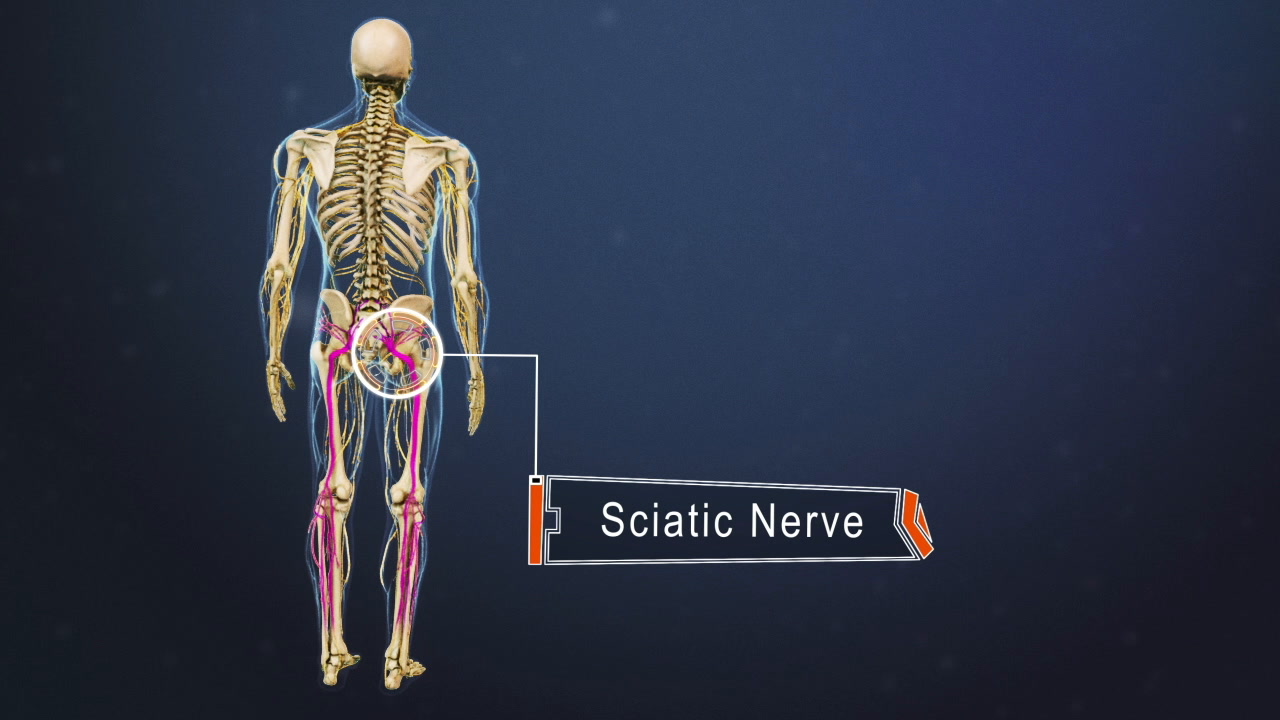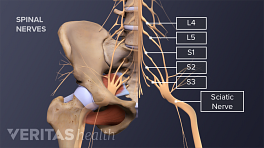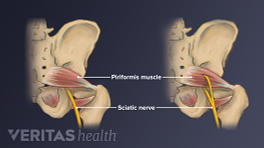The sciatic nerve is the longest and largest nerve in the human body, running from the lower back through the back of the leg, and down to the toes.
The sciatic nerve starts as a collection of nerve fibers in the lower spine. These nerve fibers, or roots, exit the spinal canal through a number of openings in the bones at each level of the lower spine called foramina.
These lumbar nerve roots then combine to form one large nerve. The sciatic nerve is about as thick as a man's thumb at its largest point.
The sciatic nerve travels through an opening in the pelvis called the greater sciatic foramen, and typically runs below the piriformis muscle. This is why piriformis muscle problems or spasm can lead to sciatica symptoms.
The sciatic nerve then travels down the back of the upper thigh.
Above the back of the knee, the sciatic nerve divides into two nerves, the tibial and the common peroneal nerve, both of which serve the lower leg and foot.
Certain conditions in the lower back can irritate the sciatic nerve, causing pain to radiate along the nerve. These symptoms are called sciatica, or lumbar radiculopathy.
The complex anatomy of the sciatic nerve means that symptoms of sciatica vary depending on where this irritation occurs.










